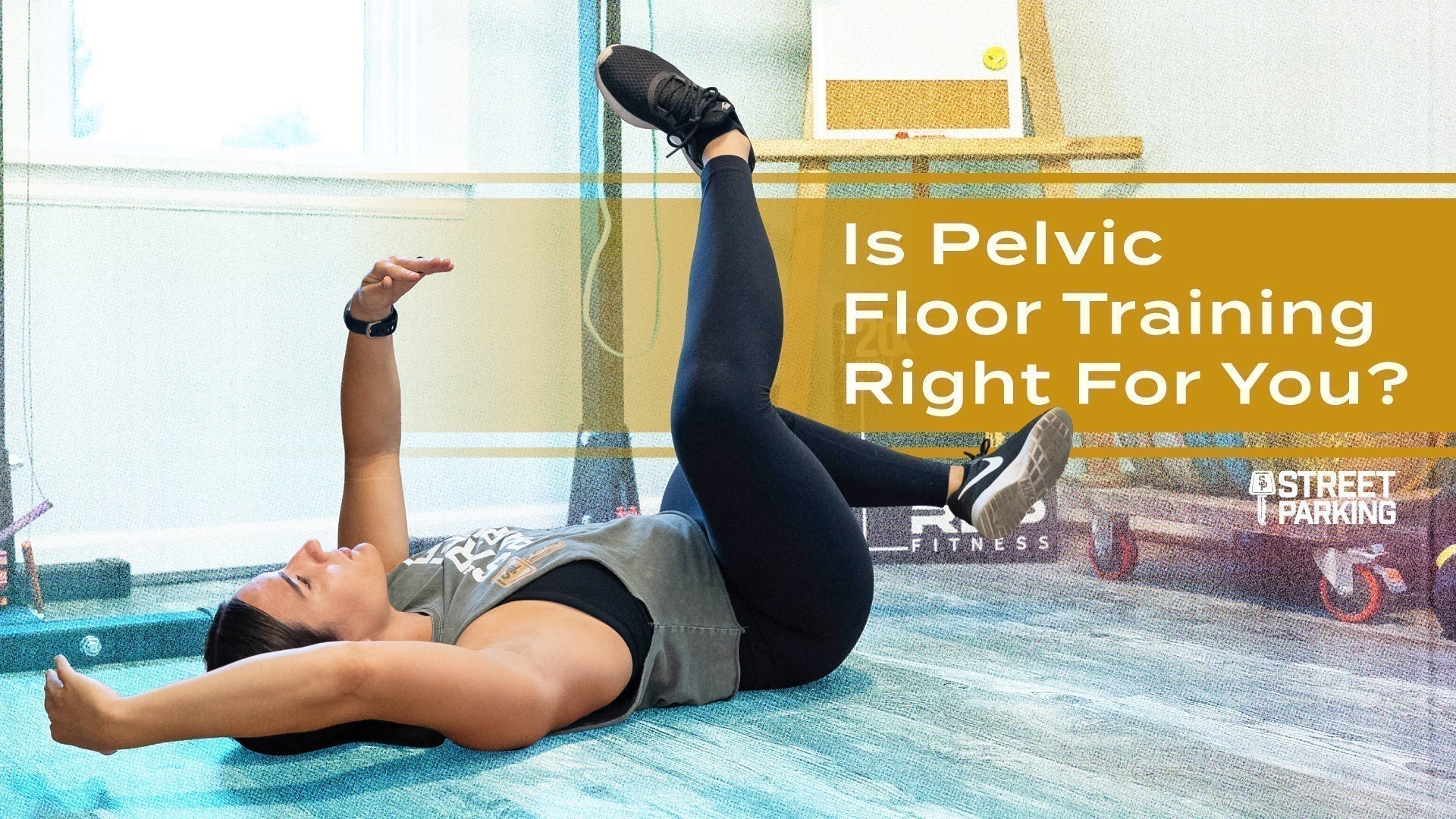
Ever wondered who programs your workouts and what their strategy is as they’re creating them?
Effective programming is similar to a top notch recipe -- there is a list of key ingredients that each play a vital role in the overall outcome of the finished product.
When it comes to programming workouts, every workout we build has key ingredients and the different combination or amount of ingredients guides you towards hitting a desired outcome.
The reason for sharing our key programming strategies with you? We want you to understand that every workout is intentional and when you understand what your specific goal should be for that day, you’ll be able to effectively choose proper weights, substitutions, etc. and get the most out of that workout. We want you to know that there is a WHY behind every workout we create.
1. Energy Pathways
Understanding our body’s energy pathways is the foundation for understanding how our workouts are programmed.
Everything we do requires energy and we source our energy through one of three pathways:
- Phosphocreatine pathway
- Glycolytic pathway
- Aerobic pathway
Phosphocreatine pathway: This pathway uses creatine phosphate as fuel. Know any athletes that supplement creatine? The primary reason for doing that is because our body can only produce and store so much of it, and by taking creatine as a supplement, those athletes are looking for additional assistance with this specific type of energy output.
When you sprint 100m or go for a one rep max deadlift, you’re utilizing your phosphocreatine pathway. This pathway is sourced for anything that is 100% max effort but if you try to sustain that effort for longer than 10 seconds or a max effort lift, you won’t be able to.
Benefits of this pathway: Hormonal benefits such as increased testosterone which helps build muscle. Nervous system benefits of your body learning to recruit all of your muscle fibers at the same time
Glycolytic pathway: This pathway uses glucose as its primary fuel. When you train at roughly 70% of your max capacity, run at a pace you could keep up with for 2 minutes but not longer, or do intervals of high intensity workouts that require large bursts of energy for a few minutes at a time with built in rest (think 3 min AMRAPS with 2 min rest in between rounds), you’re utilizing the glycolytic pathway.
Benefits of this pathway: This pathway is the most bang for your buck because there will be some carry over to the phosphocreatine pathway (muscle and strengths gains) as well as some carry over into the aerobic pathway (body fat loss, heart and lung function). If we had to choose to tap into only ONE of these 3 pathways for the next 12 months, it’d be this one.
Aerobic pathway: This pathway is often referred to as the “fat burning zone.” When you train at roughly 40% of your max capacity and perform movements that you could sustain for as long as you have fuel or water to keep you moving forward, you’re utilizing the aerobic pathway.
We live our daily lives in this pathway.
Benefits of this pathway: This is where fat is burned for fuel and training in this pathway is great for heart and lung function.
2. Total Time/Work to Rest Ratios
- 18 minute AMRAP (as many rounds as possible)
- 3 min AMRAP -- 2 min rest -- 3 min AMRAP -- 2 min rest
The 2 examples above are time based workouts, but the intent of each is different and knowing what energy pathway we want you to tap into that day helps us figure out the time element.
18 minute AMRAP: In a workout like this, you know that you are going to be working for a total of 18 minutes with no rest. Before the workout begins, you’ll be able to take a look at what movements you’ll be doing and start planning what pace you’re going to perform those movements at that will allow you to move for the entire 18 minutes. Depending on how much effort you decide to put in, you’re likely going to end up utilizing the glycolytic pathway.
3 min AMRAP -- 2 min rest: In a workout like this, you know that you’ll be working in 3 minute increments followed by 2 minutes of rest. Because there’s rest built in you know that you’ll be able to push yourself really hard for those 3 minutes that you’re working.
When you do a workout like this, depending on the weight/reps and/or how much effort you put in, you’ll likely find yourself utilizing the glycolytic pathway OR the phosphocreatine pathway.
3. Full Body Development
Something you’ll notice about the SP programming that may be different from what you’re used to seeing at the globo gym is that we incorporate a lot of full body movements into our workouts, as functionally that’s the way our bodies are designed to move.
When we train this way and incorporate our entire body, the outcome is both aesthetically pleasing and creates balance across all of the joints for longevity and coordination.
Additionally, we want you to train your body to be functional in ways that translate to the natural movements in your life such as:
- Picking your child up from the ground
- Pushing yourself up from the ground after laying down
- Lifting a heavy box overhead to place on the top shelf of the closet
That’s why there’s a constant rotation of movements like deadlifts, squats, push ups, push press, etc. in our programming, because they all serve a different functional purpose.
4. Weight and Reps
Once we’ve determined what energy pathway we want to tap into and how much time/work to rest ratio we want for that day’s workout, we start to work through the weight and reps.
Let’s use the examples from above:
- 18 minute AMRAP (As Many Rounds As Possible)
- 3 min AMRAP -- 2 min rest -- 3 min AMRAP -- 2 min rest
In the 18 minute AMRAP workout, the goal is to maintain stamina for the full 18 minutes so one option would be to program a higher rep count of deadlifts at a moderate weight.
In the 3 min AMRAP with 2 mins of rest built in between rounds, our goal is to exert a large amount of effort for a short period of time in order to tap into the phosphocreatine pathway so one option would be to program in a heavy deadlift.
In both workouts we’re doing deadlifts which are utilizing the same muscle groups, but the demand of the muscle group shifts from stamina to strength and/or power, changing the energy pathway used.
At Street Parking we want you to build a well rounded body that will assist you long term. Programming workouts that help you build stamina, strength, and power all while rotating your ability to become efficient utilizing all 3 energy pathways is the best way to do that.
5. Psychological Factors
This key ingredient can be forgotten but is just as important as the others.
Oftentimes when people find themselves in a position where they have to “program” the workouts, they resort to jotting down super long workouts with a higher number of reps or a long time cap. This makes sense as most of us were taught that long workouts = more effective, but that concept is not necessarily correct.
When you’ve been working out for awhile, you start to recognize that shorter workouts are oftentimes more challenging and really push you to your limits. There is a psychological component that starts to come into play because you start to understand that if you check in mentally as well as physically, the experience of that “easier looking workout” is going to be completely different than you expected, because you’re not just pushing yourself to your physical capacity anymore -- you’re also pushing yourself to your psychological capacity.
Here’s an example of a workout where the psychological factors can start to come into play:
For Time:
100 back squats
- Every minute on the minute perform 3 devil press -
Goal: Finish under 10 minutes
On paper this workout looks simple but mentally you now have to make a choice. Are you going to pick up the pace and push through those back squats so you can do less devil presses and finish under the 10 minute time cap or are you going to coast on the squats, do a higher number of devil presses, and finish outside of the time cap because you exerted less of your physical and psychological capabilities?
The choice of how mentally tough you learn to become during your workouts will be a direct reflection of your overall experience and long term results.
6. Strategic Movement Combinations
Being strategic about our movement combinations is another element that’s going to help us nail down the desired stimulus for that day’s workout.
Here’s an example:
- If we program a workout that has wall walks and push press together, our intention is to blast your upper body which means you’ll need to take more breaks as you transfer back and forth between movements, which means you won’t be able to move as quickly
- If we program a workout that has wall walks and deadlifts together, our intention is to give you a full body workout, which means your upper body won’t be as smoked when you get back to the wall walks, so you won’t have to take as many breaks, and you’ll be able to maintain a more intense energy output throughout the workout.
Now that you’ve had an inside look behind what key ingredients we use when programming our workouts, you can see that it’s a strategic combination of:
- Energy Pathways
- Total Time/Work to Rest Ratios
- Full Body Development
- Weight and Reps
- Psychological Factors
- Strategic Movement Combinations
You’re probably thinking, “Man, I’m really glad that I don’t have to program my workouts because that sounds like a lot to figure out!”
It is, which is why we take the guesswork out of that process for you, so you can just show up everyday, figure out what the goal is, form a gameplan, and get it done.
How do our members know what the desired stimulus for each workout is?
When you become a Street Parking member you gain access to every single workout, which also comes with a description that will guide you through the process of picking an appropriate version of the workout, understanding the time or round goal, helping you scale properly, etc.
If you read through the descriptions and are still confused or need clarification based on your individual situation, you can post your questions up on the private Facebook group, DM us or put a comment under the workout post and someone from the SP team will take care of you.
At the end of the day, we want you to know that there is a method behind our programming that has you in mind, the individual who has a full life schedule and wants to look and feel good today, but also wants the effort they put in today to translate over to them looking and feeling good long term.


